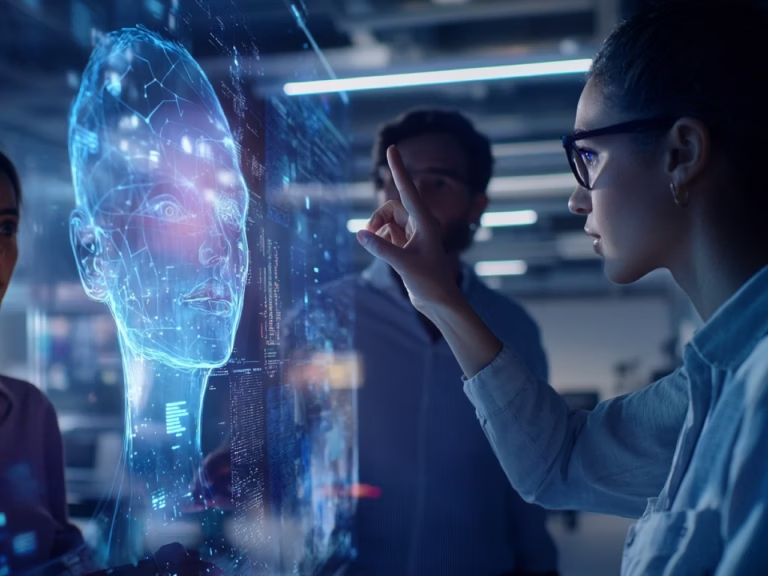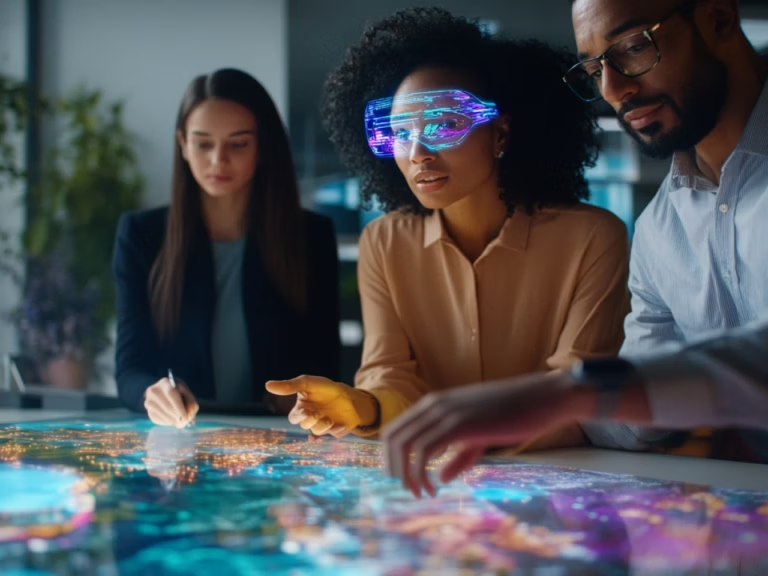Visual Search & Generative AI in e-commerce solutions
In today’s rapidly evolving digital marketplace, one innovation reshaping the e-commerce landscape is the integration of visual search and Generative AI technologies. As consumers become more visually driven, these tools not only simplify product discovery but also provide hyper-personalized shopping experiences.
Understanding Visual Search in E-commerce
At its core, visual search allows customers to upload or snap images of products they like, which are then used to search for similar items on e-commerce platforms. Instead of relying on text-based search, visual search narrows down product discovery by using AI-driven algorithms to identify features, shapes and colors in images.
For example, a customer may take a photo of a pair of shoes they admire on the street and upload it to an online store. The store’s visual search algorithm would then analyze the image and return the closest matching products from its inventory. This type of search is particularly beneficial in industries like fashion and home décor.

The Role of Generative AI in E-commerce
The impact of visual search on the e-commerce landscape is profound. It not only reduces friction in product discovery but also enhances the overall shopping experience by making it more intuitive and engaging.

Revolutionizing
Customer Engagement
While visual search transforms how users discover products, Generative AI revolutionizes the way customers engage with these products. Generative AI refers to algorithms that create new content, such as product descriptions, reviews, and even visualizations based on the available data.
In e-commerce, this technology is reshaping personalization, offering tailored recommendations, and creating dynamic shopping experiences.
How it Works
Imagine a shopper looking for an outfit to wear to a business event. Generative AI, through advanced algorithms, can analyze the shopper’s browsing history, preferences, and even social media activity to suggest outfits that match their style, fit the occasion, and align with current fashion trends.
The system could then automatically generate personalized product descriptions, making the shopping experience feel uniquely catered to the individual.


Product Recommendations
Generative AI also enhances product recommendations. By using machine learning models, e-commerce platforms can predict not just what customers will buy next, but also what they should buy based on their interests and behaviors.
This leads to higher customer satisfaction and increased conversion rates.
Seamless Integration with E-commerce Platforms
Modular integrations provide flexibility. Whether a business is looking to implement just visual search or a combination of both visual and Generative AI capabilities, they can choose the features that best align with their needs.
Future Trends and Conclusion
By integrating visual search and Generative AI, companies can create dynamic, personalized, and efficient shopping experiences, enhancing customer satisfaction and driving long-term success.

AI Advancement
As AI continues to advance, we can expect even more sophisticated tools to emerge in e-commerce. Technologies like augmented reality (AR) and virtual reality (VR) are already beginning to integrate with AI solutions, providing immersive shopping experiences.
Furthermore, deep learning models will enable even more accurate and creative uses of Generative AI, predicting not only consumer behavior but also trends and market demands. The future of e-commerce is undoubtedly AI-driven, and businesses that adopt these tools today will be well-positioned to lead the market tomorrow
Conclusion
In conclusion, for businesses looking to stay competitive in the digital age, adopting SaaS solutions with API integrations for visual search and Generative AI is not just an option—it’s a necessity. The combination of these technologies is shaping the future of e-commerce, and those who leverage their potential will be the ones to thrive.

Benefits of Integrating Visual Search and
Generative AI in E-commerce
The integration of visual search and Generative AI brings a myriad of benefits to e-commerce businesses:
Enhanced Customer Engagement
By providing intuitive search and personalized recommendations, businesses can create more engaging shopping experiences.
Improved Conversion Rates
When customers can quickly find what they are looking for and receive personalized suggestions, they are more likely to make a purchase, leading to higher conversion rates.
Increased Customer Retention
Personalized shopping experiences foster brand loyalty, as customers appreciate the individualized attention and convenience.
Streamlined Product Discovery
Visual search reduces the time customers spend browsing through irrelevant items, allowing them to find desired products faster and with greater accuracy.
Scalability
API and modular integrations ensure that businesses can scale their operations as their needs grow, without major infrastructure overhauls.